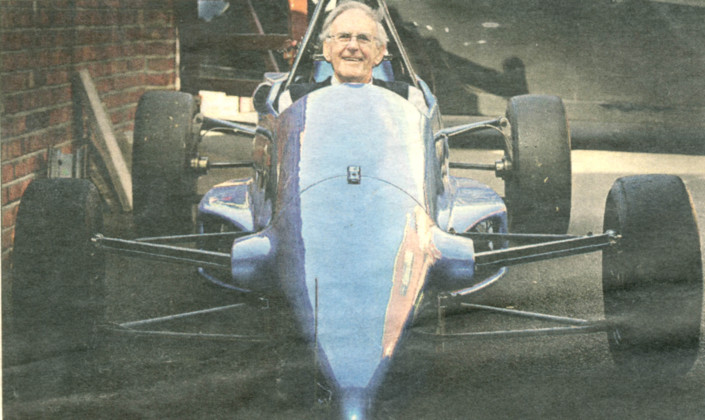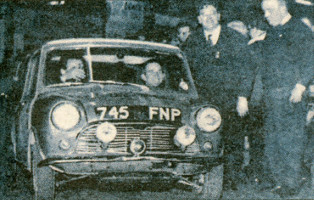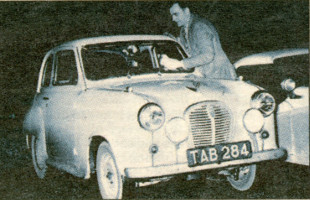Rally Memories of 1950's Champion
by Peter Carroll, Motoring Editor.

HE'S not as quick as he once was but Tony Fisher can still hold his own in a single-seater racing car - even at the age of 82.
The Hagley & District Light Car Club member treated himself to the racer a few years back when he realised that age was creeping up on him.
" I'd driven every sort of motor car there was except a single seater. I thought 'I'm not getting any younger, so it's now or never".
The fire-breathing Van Diemen Formula Vauxhall he now uses for hill-climb events is a far cry from the cars he cut his teeth on in the 1950s.
Back then, Tony, who lives in north Worcestershire, enjoyed success on the circuit with an Austin A35. With a leisurely 0-60mph time of around 31 seconds, the dumpy-looking Austin would not be everyone's idea of a top rally car.
Prowess
Yet once Tony had fettled his A35's rockers, valves and carbs, it was transformed into a fifties flyer - and it was good enough to help him win the inaugural Express & Star Rally in 1958.
"It certainly gave us a good edge" says Tony, who was proud of his engineering prowess.
After switching to a Mini he went on to become RAC Rally national champion in 1962 - and such was his dedication to motorsport that he took part in the Tulip Rally in Monte Carlo on his honeymoon with his wife Patricia. Luckily for Tony, she was, and remains, an avid motorsport fan.
Rallying in the 1950s was a completely different affair to the high octane sport it is today. Many provincial newspapers, such as this one, sponsored their local event and they attracted huge crowds.
These days rallies are held over a series of short but intense stages on closed roads, but the first Express & Star Rally took place on public roads and was held at night.
There were a number of different start points dotted around the country and the aim was to converge at a common control point at Church Stretton for the start of the 350-mile navigational competition, which lasted for much of the night. Even then, the 90 competitors had to complete a speed driving test before they could adjourn for breakfast in Wolverhampton and find out who had won.
Navigating was equally as important as a driver's ability and Tony can still recall being the sole driver to finish one stage because his co-driver at the time, Brian Melia, was the only navigator able to correctly plot the course on the map.
Over the years the WSSCC rally has had many different formats and names, because the club always names it after the main sponsor. But members have always tried to ensure it remains a friendly, well-run event - and this has helped it attract some of the top names in the world of rallying.
Previous winners have included the likes of Stig Blomqvist, the late Colin McRae, Russell Brookes and Malcolm Wilson, who currently oversees Ford's international rallying operation. In the mid 1970s Pentti Airikkala became the first of a series of "Flying Finns" to win the rally. He was followed to the top of the podium by Henri Toivonen, Ari Vatanen and Markku Alen. Ironically, Hannu Mikkola, perhaps the best known of the lot, only managed second place as his best finish. 
Volunteers
In the 1980s Audi, which was wanting to boost its involvement in motorsport, came on board as sponsors and revered driver Michelle Mouton followed Sir Stirling Moss's sister Pat into the history books as the second female winner of the rally in a four-wheel drive Audi Quattro. These days the event is known as the Bulldog Rally and it takes place tomorrow in the forests of mid-Wales, with rally headquarters over at Oswestry. Clerk of the course Kevin Witton says: "Staging the rally is a massive undertaking which takes the club pretty much all year to organise. On the day we will have anything up to 400 people helping with marshalling and car parks and so on - all volunteers."

While Tony Fisher wishes it well, health issues mean he is unlikely to travel to Wales for the competition.
His A35 is long gone. Tony had to sell it to get a better car but he still has fond memories of his early race days.
"When I first won it in 1958 I never dreamed I would be looking back 50 years later at such a successful competition. You didn't know where you were half the time, but I think it was lot more fun in those days."
